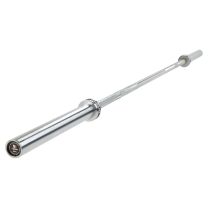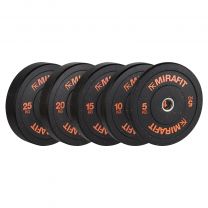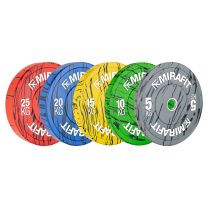How To Deadlift: Form Guide, Tips And Different Types
How To Deadlift: Form Guide, Tips And Different Types

Deadlifts are great for building muscle as well as working your lower back, glutes, core and hamstrings.
And although squats are known for being the best in terms of building size and strength, they do work your posterior chain like nothing else.
Additionally, there are quite a few different types of deadlift that are worth including in your training.
Below, we go through how to do a standard barbell deadlift as well as a few of the variants that will really help you progress.
Why deadlift?
There are so many benefits in doing deadlifts, whatever your preferred style:
• They build muscle – deadlifts are compound exercises and they’re really good for building all over muscle mass.
• They improve grip strength – being able to squat a certain amount of weight is one thing. But being able to lift it off the ground and hold onto it is another thing entirely. Deadlifts help to improve your grip strength which is essential for lifting as well as exercises such as pull ups.
• They don’t need much equipment – for deadlifts, you simply need a barbell, some bumper plates and a pair of bar collars. So, you don’t need an entire gym to get a decent strength workout.
• They work your hip flexors – hip flexors can be a tricky area to work but they’re really important for things like squats and plyometric exercises. Working them will really help you with your power and explosivity too.
• They’re functional – deadlifts have everyday application and are great for simply helping you not get injured when doing day-to-day lifting.
How to deadlift

• There are a few points to remember when doing a standard deadlift:
• Have the barbell straight and walk up to the bar
• Place your feet under the barbell and make sure the bar goes across the middle of your feet – not right next to your shins and not over your toes. This will help ensure a straight bar path so that you can keep your balance.
• Bend at the knees until your shins meet the bar – again, the bar shouldn’t move
• Your arms should be slightly outside of your knees
• Hold onto the bar with an overhand grip – do not lift yet
• Push your chest out so that your back is straight
• Lift the bar up while maintaining a straight back
• You should drag the bar up your shins and onto your thighs
• Your arms should be locked out
• Straighten your body – don’t hyperextend at the end, just stand up straight
• Squeeze your glutes
• Lower the bar back down in a controlled manner
To deadlift properly, you’ll need:
• A 7ft Olympic Bar
• Some Bumper Plates
• A pair of Olympic Bar Collars
What are the different types of deadlift?
There are lots of ways you can vary your deadlifts. And each variant will help you target specific areas.
Partial deadlift
Partial deadlifts are great for building strength. They also help you to work on your lower back as you work your way up to the next level.
Using the squat rack, rest the barbell on the safety bars at the desired height so your starting point is raised up away from the floor. This makes the initial lift a little easier as you are able to engage more muscles from the start.
Romanian deadlift

Romanian deadlifts are essentially standard deadlifts but without letting the weight drop to the floor. They are normally done with less weight so you can do more reps. They’re great for working on your lower back as well as supplementing your training.
Keep your knees soft – not locked – and pivot at the hips. Go down as far as you can while keeping your back straight. Do not let the weights touch the floor until you have completed your set.
Trap bar deadlift
As you might have guessed, this one involves using a Trap Bar instead of a barbell to do your deadlifts. Trap bars are also known as hex bars or shrug bars, and using one changes where the weight load sits i.e. either side of your body rather than in front.
They’re really good for helping you maintain a straight bar path as well as for taking the pressure off your wrists as you lift.
A really nice variant to add into your training.
Sumo deadlift

Sumo deadlifts shorten the bar path, so these are often good for building strength.
They place more emphasis on your quads and hips and are slightly easier on your hamstrings. Start off with a low weight so you get a feel for them, then build up to a heavier load.
Deficit deadlift

Ideal for more experienced lifters, deficit deadlifts extend the range of motion you experience when doing deadlifts which leads to greater extension. To perform them, you will need to raise yourself off the ground.
You can do this by using a couple of weight plates – just make sure you train safely.
Barbell hack squat
This is a trickier one to perform but great for targeting your quads. Start in a deep squat position with the barbell on the floor just underneath your glutes.
They’re much more difficult to perform, but they’re great for building strength. Master these and you’ll really notice an improvement when you go back to standard deadlifts.
Have your feet shoulder width apart with your toes pointing outwards slightly. With an underhand grip and a straight back, push up through your legs. The bar should follow up your calves and onto your hamstrings.
And although they say squat in the name, these are basically deadlifts, but the bar’s behind you instead of in front.
Snatch grip deadlift

This is a deadlift but with a much wider grip, so your hands are at the outer ends of the barbell. They’re an advanced exercise suitable for more experienced lifters. They mainly help with developing grip strength as well as general back strength.
Are deadlifts for back or legs?
Deadlifts work your posterior chain. When doing standard deadlifts, you’ll feel them working your hamstrings (backs of your legs), glutes and lower back.
If you have a weak lower back, then it’s very possible you will feel it more in your back, just because of the difference in strength between your muscles.
When doing deadlifts, it’s important you build up the weaker points first with supplementary exercises, before taking on heavier weight loads. This is to help make sure you don’t strain yourself when doing deadlifts.
Which deadlift is best?
When it comes to strengthening, there’s never one route to take. It’s always about mixing it up and keeping your body guessing. Whether it’s the type of exercises you’re doing, or simply the amount of reps and sets, there’s always something you can do to keep progressing.
Start off with low weights. Even if you can lift a certain weight on one type of deadlift, it doesn’t mean you’ll be able to do lift the same weight load with a different stance. There’s no point putting yourself at risk of injury – take the time to do it properly.
Keep it varied and add more weight when you’re ready.
Want to know more? Mix things up with our guide to the trap bar deadlift, or build strength and muscle mass with our guide to the different types of squats.
For more content, follow us on Instagram, YouTube, TikTok, and on our official Mirafit Facebook page.
Enter your email to signup to our newsletter
Tags: Equipment > Bars & Weight Plates ; Exercise Type > Strength ; Target Area > Back ; Target Area > Legs







